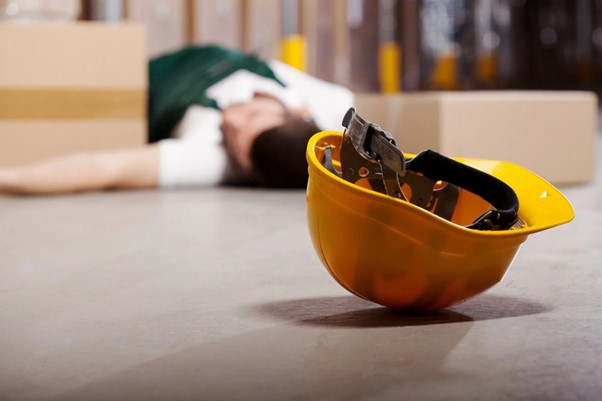Imagine walking into a workplace where everyone feels secure, valued, and protected. A place where safety isn’t just a policy, but a way of life. This is the vision of a culture of safety in the workplace – an environment where employees thrive and flourish, knowing that their well-being is a top priority. In this blog post, we delve into the significance of cultivating a culture of safety and the role of a DER (Designated Employer Representative) in making this vision a reality.
The Foundation of Workplace Safety
Creating a Culture, Not Just Compliance
Workplace safety goes beyond mere compliance with regulations. It’s about instilling a mindset that prioritizes the well-being of employees above all else. A culture of safety transcends rules and procedures, becoming a shared belief system that drives actions and decisions.
A Proactive Approach
Safety should not be a reactive measure triggered by accidents or incidents. A robust culture of safety involves identifying potential risks and addressing them before they escalate. This approach requires constant vigilance, fostering a sense of responsibility among all team members.
The Role of a Designated Employer Representative (DER)
In this journey towards a safer workplace, the role of a DER is pivotal. A DER acts as a bridge between the organization and its commitment to safety, ensuring that policies and practices are not just on paper but deeply embedded in the company’s DNA.
Championing Safety Initiatives
The DER is the torchbearer of safety initiatives. They spearhead efforts to educate employees about safety protocols, ensuring that everyone is well-informed and understands their role in maintaining a secure work environment.
Promoting Open Communication
Effective communication is at the heart of a culture of safety. The DER fosters an environment where employees feel comfortable sharing safety concerns, ideas for improvement, and even incidents without fear of reprisal. This transparency allows for quick resolution and constant learning.
Staying Current with Regulations
Regulations and safety standards are dynamic, evolving to address new challenges. The DER keeps a finger on the pulse of these changes, making certain that the organization remains compliant and well-prepared for any shifts in safety requirements.
Building Blocks of a Safety-First Culture
Leadership’s Buy-in
For a culture of safety to thrive, leadership must lead by example. When upper management actively participates in safety programs, employees are more likely to embrace safety as a core value rather than a mandatory routine.
Training and Education
Knowledge empowers. Regular training sessions led by the DER or safety experts help employees stay updated on best practices, emergency protocols, and potential hazards. Engaging training methods, such as scenario-based simulations and interactive workshops, can make learning enjoyable and effective.
Recognition and Incentives
Acknowledging and rewarding safe practices reinforces their importance. The DER can initiate recognition programs that highlight employees who consistently adhere to safety protocols. This not only fosters healthy competition but also encourages others to follow suit.
Continuous Improvement
A culture of safety is not static; it’s a journey of continuous improvement. The DER plays a critical role in assessing the effectiveness of safety measures, identifying gaps, and strategizing ways to enhance the overall safety infrastructure.
Steps to Foster a Culture of Safety
Step 1: Assessment
Begin by assessing the current safety landscape of your organization. Identify potential hazards, gauge employee attitudes towards safety, and evaluate existing safety protocols.
Step 2: Education
Equip employees with the knowledge they need to prioritize safety. This includes not only training on procedures but also educating them about the rationale behind safety measures.
Step 3: Communication
Establish clear channels for employees to report safety concerns or incidents. Encourage open dialogue and make sure everyone understands that their input is valued.
Step 4: Empowerment
Empower employees to take ownership of safety. Encourage them to identify hazards, suggest improvements, and actively participate in safety initiatives.
Step 5: Consistency
Consistency is key. Regular safety meetings, refreshers, and updates help keep safety at the forefront of everyone’s minds.
Step 6: Evolution
Continuously evolve your safety practices based on feedback and changing circumstances. A culture of safety is not about rigidity but adaptability.
The Ripple Effect: Benefits of a Safety-First Culture
A workplace culture steeped in safety doesn’t just protect employees from physical harm; it nurtures their mental well-being too. When employees feel secure, they are more likely to be engaged, motivated, and productive. This positive atmosphere also attracts top talent, enhancing the company’s reputation as an employer of choice.
In Conclusion
Cultivating a culture of safety is not a one-time project; it’s a commitment that requires dedication, collaboration, and ongoing effort. The role of a Designated Employer Representative is indispensable in steering this journey towards a safer workplace. By championing safety initiatives, fostering communication, and staying attuned to regulations, the DER acts as the beacon that guides the organization towards a brighter, safer future. As we continue to evolve, let’s remember that a culture of safety isn’t just a policy – it’s a promise we make to ourselves and our colleagues, a promise that ensures everyone returns home safely every day.














